Travel Stories
Diving in Sri Lanka
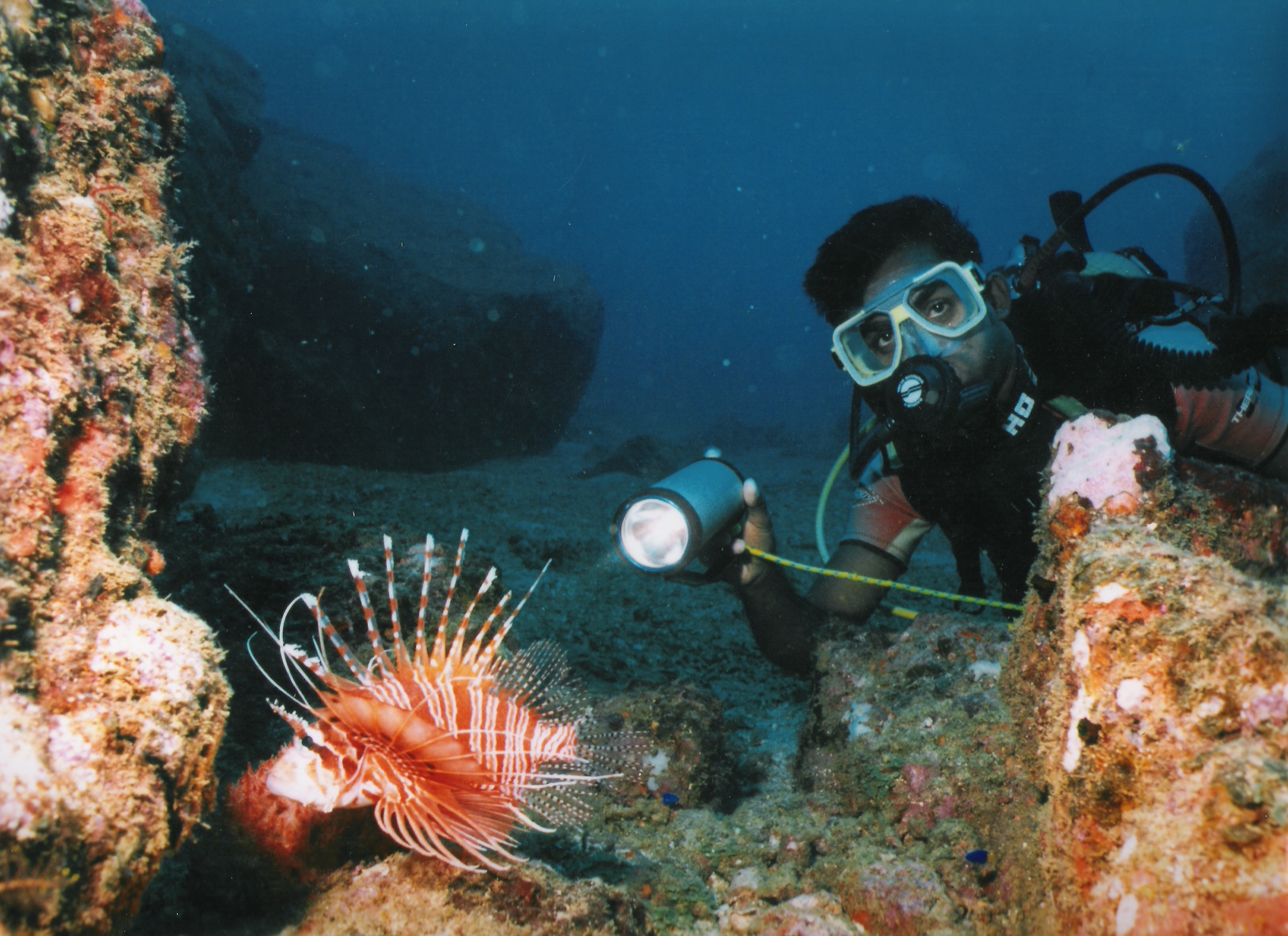
Basking in the warmth of the Indian Ocean with its white sandy beaches, tall whispering palm trees and lush green forests lies the island of Sri Lanka. This beautiful picturesque country has become a major tourist destination for both holiday makers and divers alike.
The clear turquoise water that surrounds this tropical paradise tantalises divers with a blend of colourful reefs, historical wrecks and a rich, diverse range of marine life that includes Mantas, Eagle rays and Whale sharks.
The pace and way of life in Sri Lanka is relaxed. Everyone greets you with a friendly smile as they go about their business. Cows, monitor lizards, mongoose and monkeys wander freely through the rustic villages, and water buffalo wallow in the nearby paddy fields.
All around you the history of Sri Lanka is evident; be it religious, architectural or colonial, there is always some archaeological beauty that reminds you of the island’s past. With so much history, so much culture and with so little time to see it all I was going to find it difficult to know where to begin.
My brief tour of Sri Lanka began at the luxurious Bentota beach hotel on the Southwest side of the island. The hotel is conveniently situated on a narrow stretch of land where on one side you have the Bentota river, and just metres away on the other, the warm water of the Indian Ocean. It was arranged that for the first half of my tour I would spend my time diving and exploring the nearby reefs, and the second half visiting some of the many places of interest that Sri Lanka has to offer.
The hotel dive centre prefers to do two tank morning dives, which is perfect for those of us who prefer to spend our afternoons exploring the surrounding countryside in more detail.
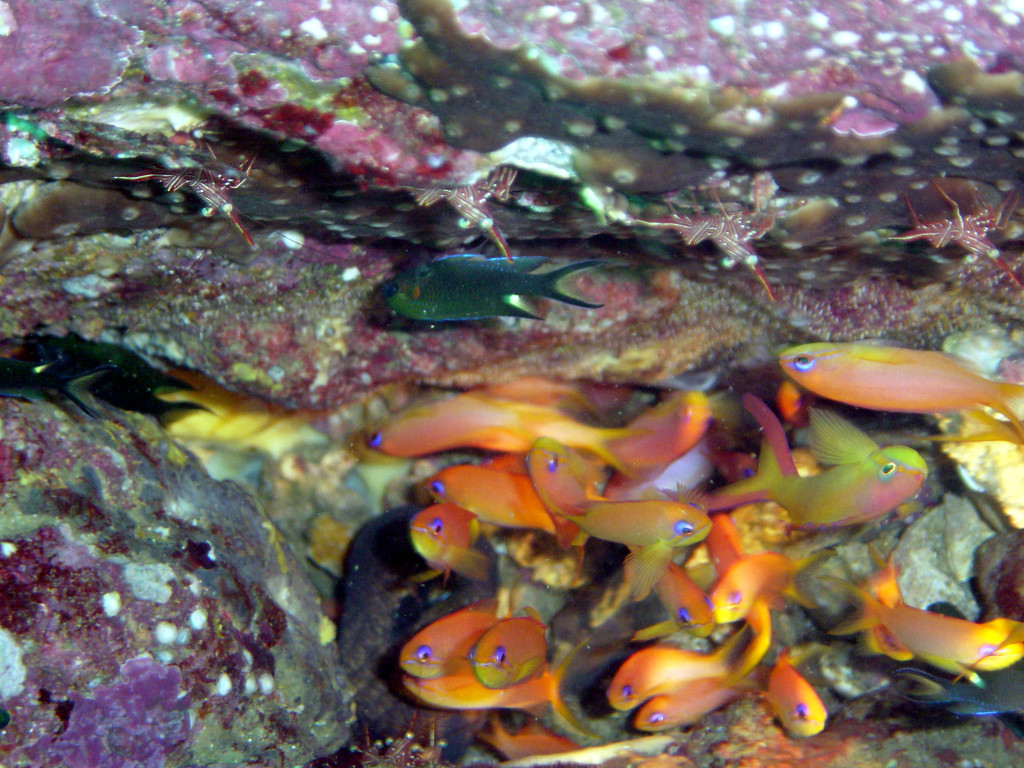 All of the sites that I visited were boat dives and less than 10 minutes away from the hotel. Crossing the mouth of the river where fresh water meets salt water can prove challenging, but luckily our skipper was well experienced and knew when and where to make a dash for the open sea.
All of the sites that I visited were boat dives and less than 10 minutes away from the hotel. Crossing the mouth of the river where fresh water meets salt water can prove challenging, but luckily our skipper was well experienced and knew when and where to make a dash for the open sea.
The dives here are suitable for all levels of experience from novice divers looking for scenic shallow unchallenging dives to those more experienced divers looking for a fast drift or a little more depth.
On the first of our dives as we made our descent we stopped at 10 metres to watch a display of sheer excitement – shoals of fusiliers rushing past with trevallies and Jack fish in hot pursuit. I watched in awe as the predatory fish forced the fleeing fusiliers in to a whirling mass of mayhem. We could even hear a continuous sound of faint thuds as the predators smashed their way into the ball of bait from all directions to catch their prey. All of this was occuring just a couple of metres or so from where I was hovering. The mayhem lasted for just a few minutes, but phew, what a way to start my diving holiday.
Although Sri Lanka is surrounded by the Indian Ocean, the topography of the ocean floor is somewhat different to that of other nearby islands. The dive sites here although colourful are mainly rock formations with small areas of hard coral and sponges. To compensate for the lack of soft corals there is a whole host of marine life of the macro variety just waiting to be discovered. Separating the rocks are a series of gullies between a metre and two metres wide that descend in to a sandy seabed to a depths of 30 metres and deeper. It was these gullies that were going to be the main focus of our dives. The rocks’ surfaces are covered in a thin layer of algae on all sides and have the odd hard coral growth here and there. If you look closely you may find small crustaceans such as Porcelain crabs and Reef crabs hiding amongst them.
Although we had fish of all shapes and sizes swimming around us, it was the smaller critters that our dive guide Sujith wanted us to see. He has dived these sites hundreds of times and new exactly where to look. On one of our dives we came across seven different species of nudibranchs, each one more brightly coloured and flamboyant than the last, a rare sea moth lying motionless on the reef that was so well camouflaged by its surroundings that it was almost impossible to spot, and a large contingent of hingebeak shrimps hiding in one of the crevices with a moray eel for company.
A titan trigger fish with its sharp teeth and strong jaws could be seen biting into the rock, reducing each mouthful to grains of sand, while a lone Porcupine fish kept a safe distance but swam along with us.
On all of the dives there was little or no current which allowed us plenty of time to explore all the nooks and crannies. Moray eels, painted Lobsters, red fire gobies and small cleaner wrasse could be seen as we explored the many overhangs. Red tooth snappers and oriental sweetlips are here in abundance along with hump-headed parrot fish. We found octopus peering at us from the safety of their lairs, watching as we swam past. Around us there were schools of powder – blue surgeonfish, and close to the seabed there were Sri Lankan rabbit fish weaving amongst the rocks and feeding on the algae. I came across what I believed was a saddled pufferfish, but on closer examination of the photo once we had returned to the boat, Sujith informed me that it was in fact a mimic filefish. These harmless little creatures take on the looks of other more poisonous fish to protect themselves from predators. Exploring the maze of gullies I was surprised to see so many varieties of shell fish.
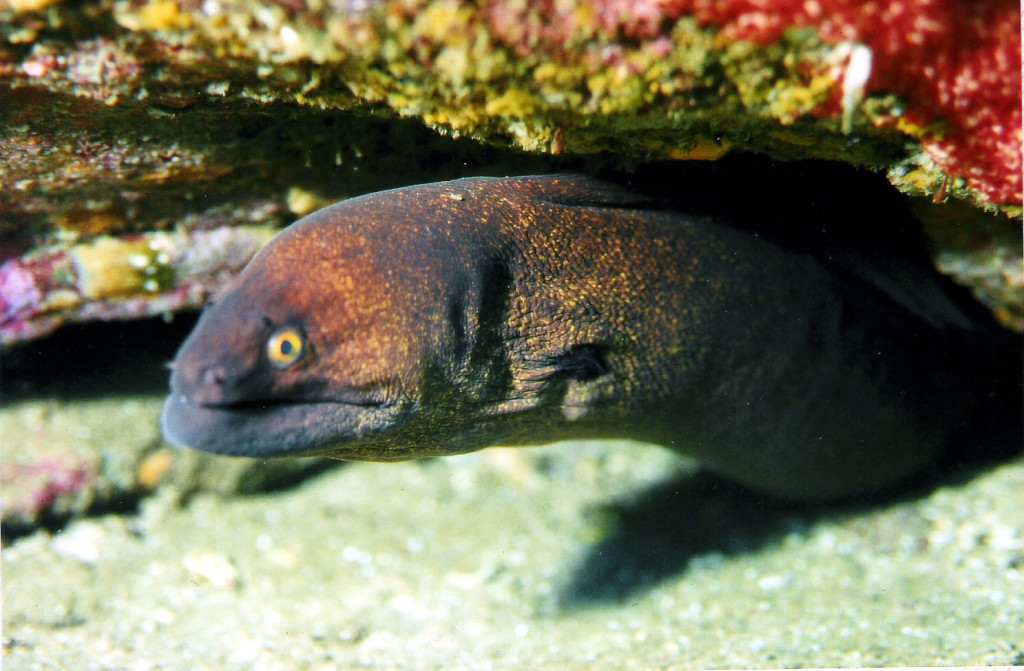 I watched spellbound as a cowrie laid its eggs on to a Sponge, and I can tell you that this rare spectacle is well worth watching. The gastropod literally comes out and completely covers its shell with what looks a bit like a black velvet blanket decorated with gold sequins. Getting as close as we dared without disturbing the delicate creature we could just about see the eggs as they were being attached to the sponge, and then within an instant and without warning the creature disappeared back into the safety of its shell.
I watched spellbound as a cowrie laid its eggs on to a Sponge, and I can tell you that this rare spectacle is well worth watching. The gastropod literally comes out and completely covers its shell with what looks a bit like a black velvet blanket decorated with gold sequins. Getting as close as we dared without disturbing the delicate creature we could just about see the eggs as they were being attached to the sponge, and then within an instant and without warning the creature disappeared back into the safety of its shell.
At the other end of the spectrum large pelagic animals such as Mantas, Eagle rays, Sting rays and Whale sharks make regular unannounced but welcome appearances. These gentle giants of the ocean, unperturbed by our presence, appeared to enjoy interacting with divers as they glided past just millimetres from our heads time and time again. So while you are exploring the reef, every now and again look out in to the blue – you never know what you might find swimming alongside you.
Between dives we spent our surface intervals on the boat. While we relaxed, had a cup of tea and checked our photos the crew were busy changing our tanks and getting ready for the next exciting dive.
As I was only diving in the mornings I had the afternoons free to do as I pleased. Although I could have relaxed by the pool or sunbathed on the white sandy beach, I preferred to spend my time visiting some of the local attractions. For me a trip to the turtle sanctuary in nearby Kosgoda was a must, and being just a 15 minute Tuk Tuk ride from my hotel it was ideally placed. The rescue centre was severely affected by the Tsunami four years ago, but after a lot of hard work and dedication this worthwhile centre is now back up and running and saving the lives of thousands of turtles every year. There is no admission fee – the centre relies entirely on donations the public and the generosity of its visitors. You are guided round the sanctuary and given talks on the various species of turtles that visit the island and then shown some of the patients that have been lucky enough to benefit from the care and expertise of the staff. You may be invited as I was to help release some of the rescued baby turtles, but they are released under the cover of darkness so be prepared for what is often a long night.
Another worthwhile afternoon excursion is a boat trip to one of the many secluded coconut factories that can be found along the banks of the Bentota river. Along the way it is possible to see large water monitor lizards basking on branches high up in the trees and birds such as the colourful King fisher can be found fishing. Crocodiles are occasionally spotted resting at the entrance of the Mangrove swamps. The factories are family owned and run with up to three generations of a single family all playing their part in the production and distribution of ornaments, cooking utensils and rope. A tour is highly recommended.
After five days of fantastic diving I was now ready for the second stage of my tour. I was to spend the morning visiting the world famous Elephant orphanage at Pinnawala before moving on to my hotel in Kandy. The drive would take us about four hours, so we had to leave early. My guide Rohan decided it would be a good idea if we left the normal tourist route and took a slightly longer scenic drive through the countryside, passing through small towns and villages on the way. The scenery around me was breathtaking; paddy fields on one side of the road and the lush greenery of the jungle on the other. I was travelling through the heart of Sri Lanka where wild animals wander freely through the rustic villages interacting with the local communities.
When we reached Pinnawala we found the Elephants bathing in the cool water of the river Maha Ova which isn’t too far from the orphanage. Twice a day the Elephants walk through the narrow streets passing onlookers and shop keepers as they make their way to the river.
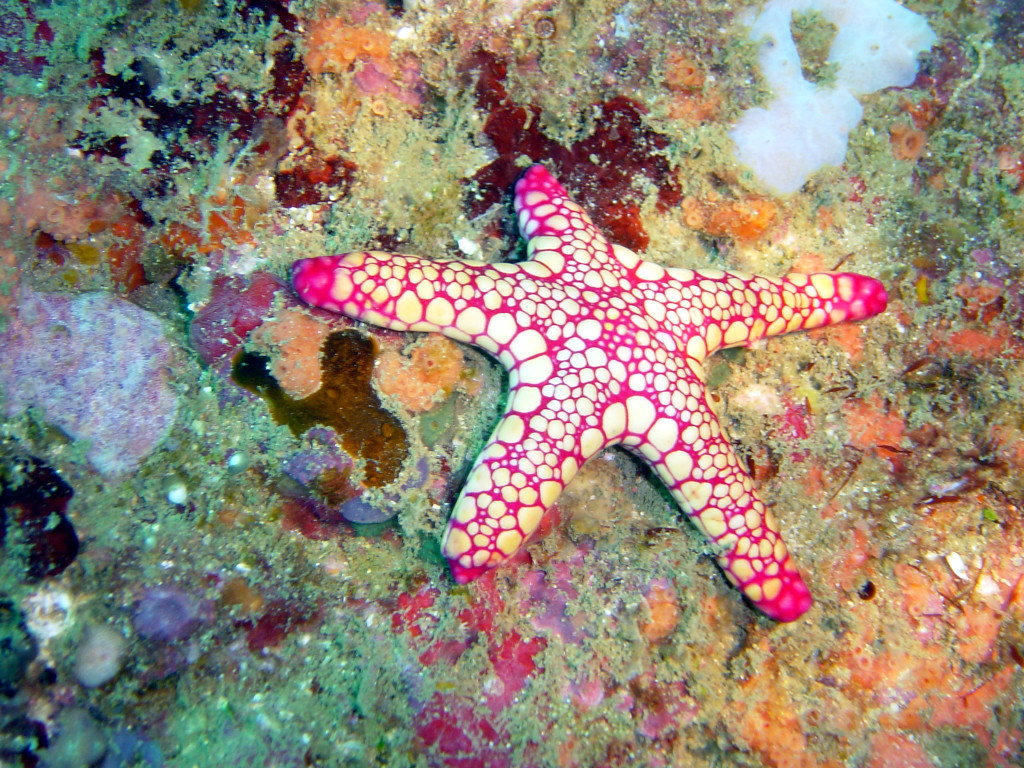 Tourists gather to watch as these magnificent creatures relax without any restraints in their natural habitat. It is amazing; there are no fences to prevent them leaving the river and returning to the jungle – these semi wild Elephants could at anytime wander off, but they choose not to. The government sponsored orphanage was established in 1975 with just seven baby elephants. Over time and with more and more baby elephants being found alone or injured in the jungle the centre has now grown to an impressive herd of 86 animals. Be prepared to spend the day here helping the keepers look after and feed the babies.
Tourists gather to watch as these magnificent creatures relax without any restraints in their natural habitat. It is amazing; there are no fences to prevent them leaving the river and returning to the jungle – these semi wild Elephants could at anytime wander off, but they choose not to. The government sponsored orphanage was established in 1975 with just seven baby elephants. Over time and with more and more baby elephants being found alone or injured in the jungle the centre has now grown to an impressive herd of 86 animals. Be prepared to spend the day here helping the keepers look after and feed the babies.
It was soon time for me to make my way to Kandy so that I could check into my hotel and after a wash and brush up visit the Sacred temple of the Tooth relic. The Hotel Suisse was to be my base as it is ideally situated in the centre of the city and close to all of the major attractions, including the Sacred temple of the tooth, the market town and the railway station. Built by the British 170 years ago as a meeting and resting place for traders of gems and spices, the 93 roomed property was purchased by a Swiss woman who lived in Germany (hence the name Suisse Hotel). At the turn of the 20th century the property was transformed into a hotel, and although modern facilities were added, many of its original features have been retained. A night or two here is recommended.
Sri Lanka has no less than seven UNSECO world heritage sites, each one proudly displaying its religious or colonial past. The Portuguese were the first Europeans to colonise the country during the 16th century followed by the Dutch 150 years later. The British gained control of the Island at
The end of the 18th century and remained until 1973 when Ceylon as it was then known gained its independence. But despite the legacies of the Catholic and Christian faiths that have had a controlling influence, the Islanders’ religious beliefs have remained unchanged. Buddhism is the main religion throughout Sri Lanka with temples and monuments dominating the landscape.
The day before I arrived in Kandy, 450,000 people had gathered from across the world, with queues stretching for miles as they waited patiently for hours in the scorching heat to catch just a fleeting glimpse of an iconic symbol of their religion. The lord Buddha’s temple is the most sacred of all temples of worship in Sri Lanka. Legend has it that when the Lord Buddha died, small sections of his bones were sent to various locations around the world in a bid to promote Buddhism. A tooth and part of a shoulder blade remained in Sri Lanka encased in a “Stupa” – a small golden bell shaped casket that is decorated with three rings. Every six years the tooth is taken from the casket and placed on display so that people can pay homage to their faith. I however wasn’t as lucky. I arrived just a little too late; the tooth had been placed back into the safety of the “stupa” and secured under lock and key in a room at the centre of the temple until the next time.
The following day we made our way to the Royal Botanical gardens of Peradeniya. These beautifully maintained gardens are home to a wide variety of tropical plants, trees and spices. For those of you who are tea drinkers it may interest you to know that it was here in 1824 that the British experimented with the idea of producing tea. Today Sri Lanka is responsible for producing the world’s finest tea.
After checking out of the hotel we were to take the winding roads to the Dambulla caves. Again the journey was scenic, lush green forests on one side, jungle on the other with remote houses and villages dotted here and there along the dusty unmade roads.
Reputed as having the largest antique painted surface in the world and 150 sculptures of the Lord Buddha, the Dambulla Cave Temple will almost certainly capture your attention. There are five caves; each one has a number of sculptures of the Lord Buddha adorning the walls and delicate fresco paintings covering the ceilings. These masterpieces of ancient times tell the story of the Lord Buddha’s life. The tranquil surroundings are also home to a Buddhist monastery that dates back to the third century BC.
After spending the morning here admiring the works of art and learning more about Buddhism, we left to visit the ancient ruins of Polonnaruwa before heading for my next hotel in Sigiriya. You will find a number of statues of the Lord Buddha adopting various postures that have been cut in to the rock, some measuring over 7 metres tall. Under the rein of king Parakramabhu the Great during the 11th century, a reservoir measuring 5600 acres was built on the western side of the city to capture the rainfall of the monsoons. A famous quote from the king says “Not one drop of water must flow into the ocean without serving the purpose of man”. This manmade lake is still being used today.
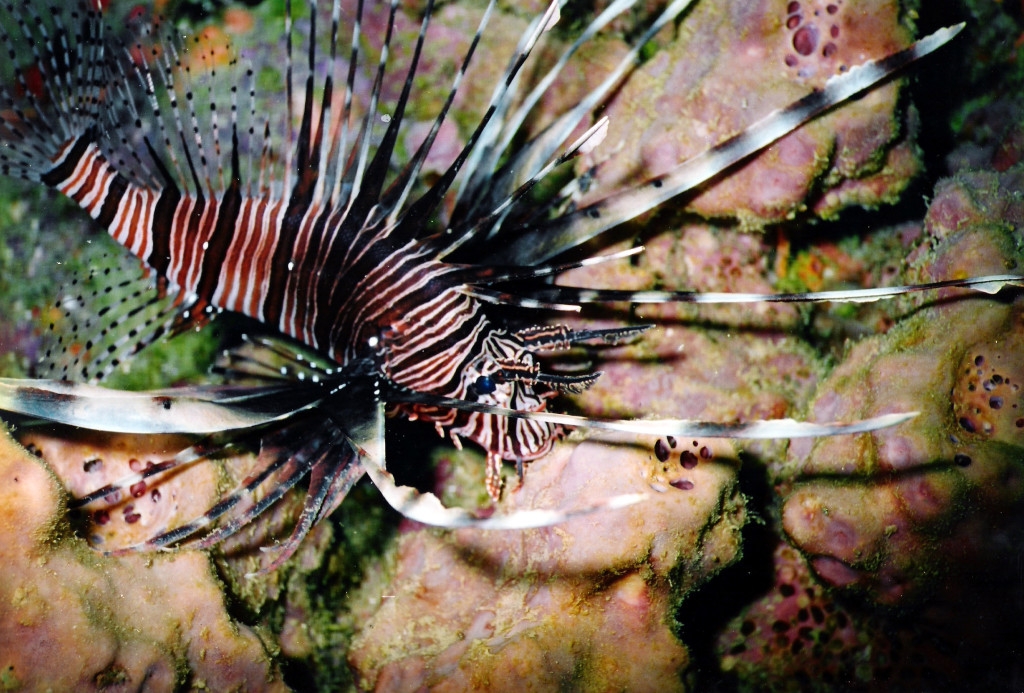 On arrival at the Hotel Sigiriya I was shown straight to the bar – not because I looked as if I needed a beer, but because the views from the terrace lie in the shadow of the Sigiriya Rock Fortress, a monolith widely regarded as the 8th wonder of the world. This luxurious hotel has won awards from virtually every department of tourism around the globe. The 80 rooms are spacious, tastefully decorated and air conditioned. As the hotel is situated on the edge of the jungle it was no surprise that a troop of Langur monkeys made an appearance, entertaining the guests with displays of aerobics. After a good night’s sleep and a hearty breakfast I was ready for the challenge ahead.
On arrival at the Hotel Sigiriya I was shown straight to the bar – not because I looked as if I needed a beer, but because the views from the terrace lie in the shadow of the Sigiriya Rock Fortress, a monolith widely regarded as the 8th wonder of the world. This luxurious hotel has won awards from virtually every department of tourism around the globe. The 80 rooms are spacious, tastefully decorated and air conditioned. As the hotel is situated on the edge of the jungle it was no surprise that a troop of Langur monkeys made an appearance, entertaining the guests with displays of aerobics. After a good night’s sleep and a hearty breakfast I was ready for the challenge ahead.
As we crossed the moat which was once guarded by crocodiles and walked along the path towards the Rock Fortress, my guide Rohan informed me that to reach the summit we would have to climb 1100 steps. On the way we would see fresco paintings of half naked women that adorn the wall of caves and overhangs, and the remains of the army barracks. Every now and then it was possible to stop for a rest and drink of water, and to take in the views. The steps gently ascend around much of the rock, coming to an end on the north face at a point known as the lions head. The huge paws are the only remnants of the lion that served as the entrance to the palace and fortress. It is between these paws that we climbed the last few hundred steps to the plateau. After spending a couple of hours exploring the ruins and looking out across the vast landscape, it was time to retrace our steps and make our way back down the rock. Be prepared to spend the day here as the climb up can take an hour or two, and the climb down at least an hour.
As my tour of Sri Lanka was unfortunately coming to an end, it was decided that I should spend my last night in the Wallawwa hotel in Katunayake which is just a 15 minute drive away from the international airport of Colombo. This 18th century colonial property has recently been transformed into a luxurious hotel with total relaxation in mind. There are 14 en –suite rooms, each with its own private veranda. After a long drive from Sigiriya and dinner on the terrace overlooking the secluded gardens I was ready to be pampered with a massage in the spa.
Blogs
Explore the Wonders of the Coral Triangle with Buceo Anilao Beach and Dive Resort

Welcome to Buceo Anilao, a haven for divers nestled in the heart of the Coral Triangle. Immerse yourself in the perfect blend of relaxation and the renowned hospitality of the Filipino people.

Our lush gardens and premium amenities provide a sanctuary of tranquillity amidst nature’s beauty. Surround yourself with artistry and serenity, complemented by the vibrant colours of our resort.

Retreat to one of our 23 spacious and inviting rooms, each designed to provide a clean and relaxing environment, ensuring you are well-rested for the exciting diving activities that await.
The buffet breakfast and à la carte menu offer a wide range of appetising dishes, featuring a delightful fusion of local flavours and international cuisine.

At Buceo Anilao, we cater to every taste, making dining an integral part of the experience.

Get ready to explore the depths with confidence, thanks to our well-maintained equipment and knowledgeable staff. Our camera room is a sanctuary for underwater photographers, providing the perfect space to prepare and care for your gear.

Your safety is paramount. Trust our local dive masters to guide you through each dive, ensuring a seamless and enriching experience. Elevate your expertise with our diverse range of courses designed to enhance your diving skills.
Dive into a haven for macro photography, where every dive unveils a kaleidoscope of marine treasures. Encounter countless underwater species, from vibrant nudibranchs to elusive Rhinopias, amidst stunning coral reefs, muck sites, and other diverse underwater landscapes.
Elevate your diving experience with mesmerising night dives! Encounter rare marine wildlife for an unforgettable adventure.
Relax after your activities with a treatment in our spa, where therapeutic massage sessions and panoramic views provide the perfect way to unwind after your underwater adventures.
As the day winds down, enjoy a relaxed sunset session. Revel in the magic of Buceo Anilao with stunning views and refreshing drinks, concluding another memorable day in our diver’s paradise.

No need to travel far! Buceo Anilao is conveniently located near Manila International Airport, just a short 2.5-hour drive to one of the best macro photography destinations in the world. This is the top choice for underwater photographers who value diversity, convenience, and the ultimate resort experience! 😊

For bookings, email us at contact@buceoanilao.com or visit our website and social media accounts for more information:
Website: www.BuceoAnilao.com
Facebook: www.Facebook.com/buceoanilao
Instagram: www.instagram.com/buceoanilao
Blogs
Your Personalised Dive Adventure in Pemba Island, Tanzania

Discover Pemba Island—Tanzania’s Underwater Paradise!
 Join Fun Divers Zanzibar, the local PADI Dive Resort, and explore the pristine waters of Pemba Island with our exclusive Dive & Stay Packages for 2025. Book now to save 15% on packages and PADI courses from February to November. Immerse yourself in an underwater adventure that reveals the best of Tanzania’s stunning marine life.
Join Fun Divers Zanzibar, the local PADI Dive Resort, and explore the pristine waters of Pemba Island with our exclusive Dive & Stay Packages for 2025. Book now to save 15% on packages and PADI courses from February to November. Immerse yourself in an underwater adventure that reveals the best of Tanzania’s stunning marine life.

Email: info@fundiverszanzibar.com / Call: +255 773 116 436 / Web: fundiverszanzibar.com/diving-pemba-island
Why Pemba Island?
Pemba Island is renowned for its untouched underwater world and extraordinary dive sites, featuring a mix of wall and reef dives suitable for all certification levels. Home to vibrant marine life and breathtaking underwater landscapes, Pemba is a bucket-list destination for underwater explorers.

Email: info@fundiverszanzibar.com / Call: +255 773 116 436 / Web: fundiverszanzibar.com/diving-pemba-island
Why Choose Fun Divers Zanzibar?
We are the first locally owned PADI Dive Resort in Zanzibar and Pemba Island. Our professional team consists of experienced Zanzibari divers who grew up as fishermen, giving them unparalleled knowledge of the area’s reefs and marine life. Dive with our local PADI Pros for an authentic, unforgettable experience.

Email: info@fundiverszanzibar.com / Call: +255 773 116 436 / Web: fundiverszanzibar.com/diving-pemba-island
What We Offer
*Tailored adventures: Experience personalized dive plans with flexible schedules, catering to all experience levels and small groups, ensuring dedicated attention from our expert local PADI Pros*
*Top-tier equipment: Free rental of high-quality dive gear from Scubapro and Mares*
*Adaptable tanks: 12-liter aluminum cylinders compatible with both Yoke and DIN valves*
*Idyllic setting: Our brand-new dive center is located on the serene Mkunguni Beach, offering 5 cozy garden-view rooms for a peaceful retreat*
*Delicious dining: Enjoy local and international cuisine at our beachfront restaurant, with meals starting at just 10 USD*

Email: info@fundiverszanzibar.com / Call: +255 773 116 436 / Web: fundiverszanzibar.com/diving-pemba-island
Seven Reasons to Dive With Us
*Green Paradise: Pemba Island’s lush vegetation creates a unique, refreshing climate*
*Big Fish Encounters: Pemba Island‘s extensive coral formations, underwater mountains, and steep coral walls offer excellent opportunities to spot large pelagic fish, especially for experienced divers*

What’s Included in Your 2025 Dive & Stay Package
*Complimentary scuba refresher course*
*Personalized dive guidance from expert local PADI Pros*
*On-site accommodation with breakfast*

Affordable Pricing
Spaces are limited—don’t miss this chance to dive into adventure and uncover the wonders of Pemba Island!
Book Now!
📞 Call: +255 773 116 436
📧 Email: info@fundiverszanzibar.com
-

 News3 months ago
News3 months agoIconic SS United States to become the World’s Largest Artificial Reef
-

 Blogs2 months ago
Blogs2 months agoScubaverse Christmas Gift Guide 2024: Day 4
-

 News2 months ago
News2 months agoSanta Divers take the Plunge for Charity
-

 Blogs2 months ago
Blogs2 months agoScubaverse Christmas Gift Guide 2024: Day 1
-

 News3 months ago
News3 months agoDiscover Turquoise Divers and Media Luna Beach & Dive Resort: A Premier Diving and Relaxation Destination in Roatan
-

 Blogs2 months ago
Blogs2 months agoScubaverse Christmas Gift Guide 2024: Day 5
-

 Blogs2 months ago
Blogs2 months agoScubaverse Christmas Gift Guide 2024: Day 2
-

 News3 months ago
News3 months agoToucan Diving at Plaza Beach and Dive Resort Bonaire Introduces PADI Mermaid Training













































